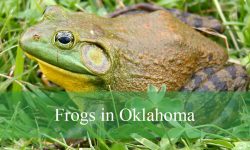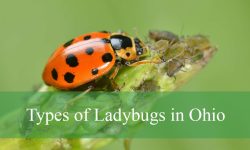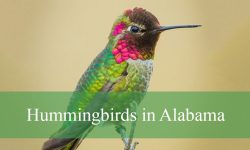Illinois is rich in birdlife, and woodpeckers are some of the most fascinating residents you can spot here. With their striking plumage and rhythmic drumming, these birds add life and sound to forests, parks, and even city neighborhoods.
From small and quick Downy Woodpeckers to the large and bold Pileated Woodpecker, each species has its own unique look and behavior. Learning to identify them brings a new level of enjoyment to birdwatching in the state.
This guide introduces 11 woodpecker species commonly found in Illinois, complete with pictures and identification tips. Birdwatchers of all levels will find valuable information to help spot these lively birds in their natural habitat.
Common Woodpeckers Found in Illinois
Downy Woodpecker
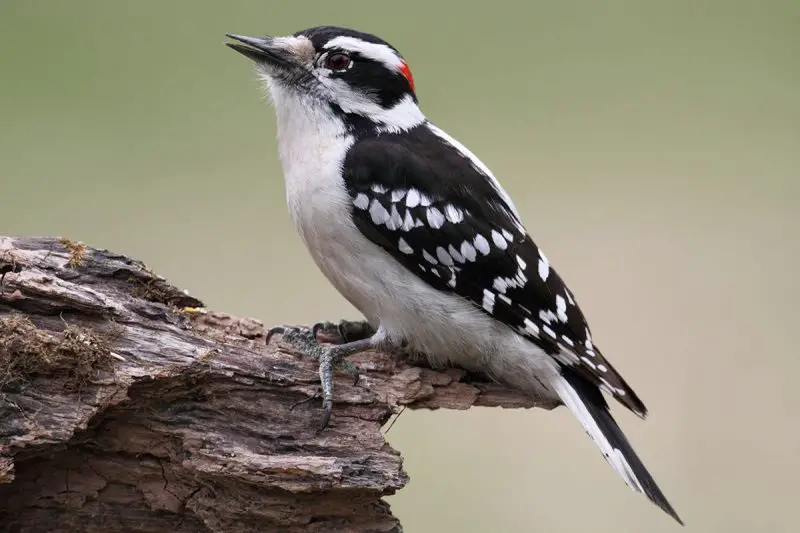
The Downy Woodpecker is the smallest woodpecker species in Illinois, measuring about 6 to 7 inches in length with a wingspan of 10 to 12 inches. It has a compact body, white underparts, and a black-and-white checkered pattern on its wings and back. Males have a small red patch on the back of their heads, while females lack this red marking. Their short bill is relatively stubby compared to other woodpeckers, which helps distinguish them from similar species.
Downy Woodpeckers are easily identified by their distinctive drumming sound and constant pecking on tree trunks and branches as they search for insects. They often forage on smaller branches and twigs, tapping rapidly to find larvae and ants beneath the bark. Their diet consists mainly of insects such as beetle larvae, ants, and caterpillars, but they will also eat berries and seeds, especially during winter months.
These birds prefer a variety of wooded habitats in Illinois, including deciduous forests, parks, orchards, and suburban areas with mature trees. They are non-migratory and can be found year-round throughout the state. Downy Woodpeckers also frequent bird feeders where suet is offered, making them a favorite for backyard birdwatchers.
A fun fact about the Downy Woodpecker is that despite its small size, it can peck up to 20 times per second! This rapid drumming helps the bird locate insects hidden deep inside tree bark, and their skull structure is specially adapted to absorb the impact without injury.
Hairy Woodpecker
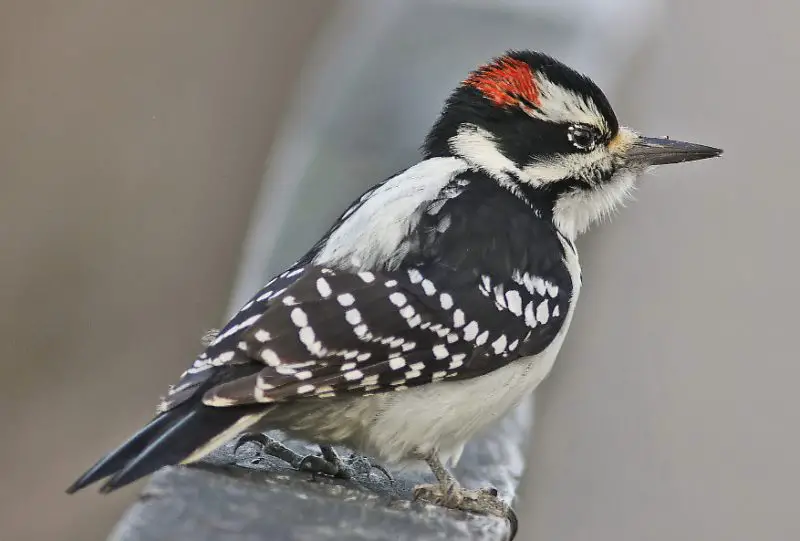
The Hairy Woodpecker is larger than the Downy Woodpecker, measuring 9 to 10 inches in length with a wingspan of about 15 to 17 inches. It has a similar black-and-white coloration, but its bill is much longer and more robust, almost equal to the length of its head. This difference is key to distinguishing the Hairy from the Downy Woodpecker. Males have a red patch on the back of their heads, while females do not.
Hairy Woodpeckers forage by pecking at the bark of mature trees to uncover insects, especially wood-boring beetles and larvae. They also consume ants, spiders, and occasionally fruits or seeds. Unlike the Downy, they tend to focus on larger trees and tree trunks rather than smaller branches. Their strong bill allows them to excavate deeper into wood to find food.
In Illinois, Hairy Woodpeckers inhabit mature deciduous forests, woodlots, and wooded suburban areas. They are year-round residents and can often be seen clinging vertically to tree trunks as they work methodically to find prey. They also nest in cavities they excavate in dead trees or snags.
An interesting fact about the Hairy Woodpecker is that it plays a vital role in forest ecosystems by controlling insect populations and creating nesting cavities used by many other bird species, including bluebirds and owls.
Red-bellied Woodpecker
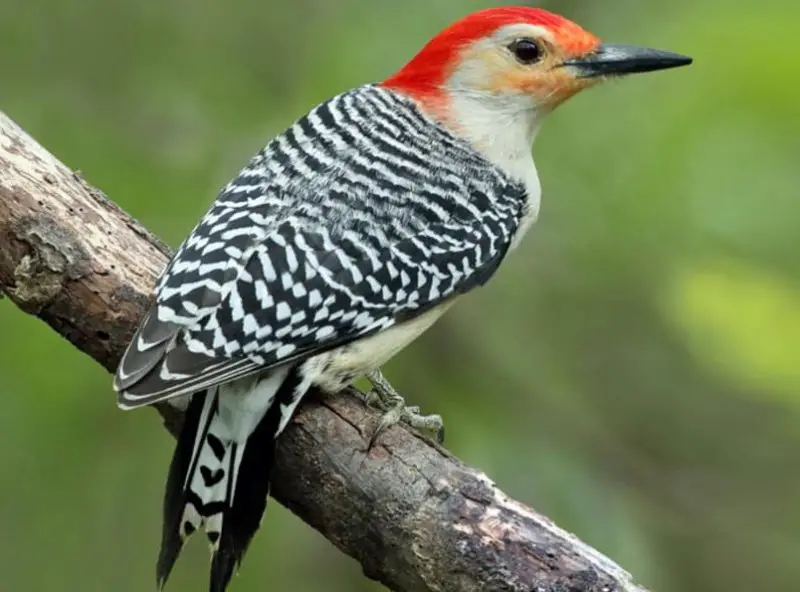
The Red-bellied Woodpecker is a medium-sized bird, about 9 to 10 inches long with a wingspan near 16 inches. It is named for the subtle reddish tinge on its lower belly, which is often hard to see. Its most striking feature is the bold black-and-white barred pattern on its back and the bright red cap that extends from the bill to the nape in males; females have red only on the nape and crown.
This woodpecker’s behavior includes loud rolling calls and drumming sounds used to establish territory and attract mates. It forages on tree trunks and branches for insects, but it also enjoys eating nuts, seeds, and fruits. In fact, Red-bellied Woodpeckers are known to cache food in tree crevices for later consumption. They are quite adaptable and often visit backyard feeders for suet, peanuts, and sunflower seeds.
Red-bellied Woodpeckers thrive in a variety of wooded habitats across Illinois, from forests and parks to suburban neighborhoods. They nest in tree cavities and readily use nest boxes. Their adaptability has allowed their population to increase steadily in recent decades.
A fun fact about the Red-bellied Woodpecker is that despite its name, the red patch on its belly is often overlooked, while its bright red head and black-and-white back make it one of the most visually distinctive woodpeckers in Illinois.
Northern Flicker
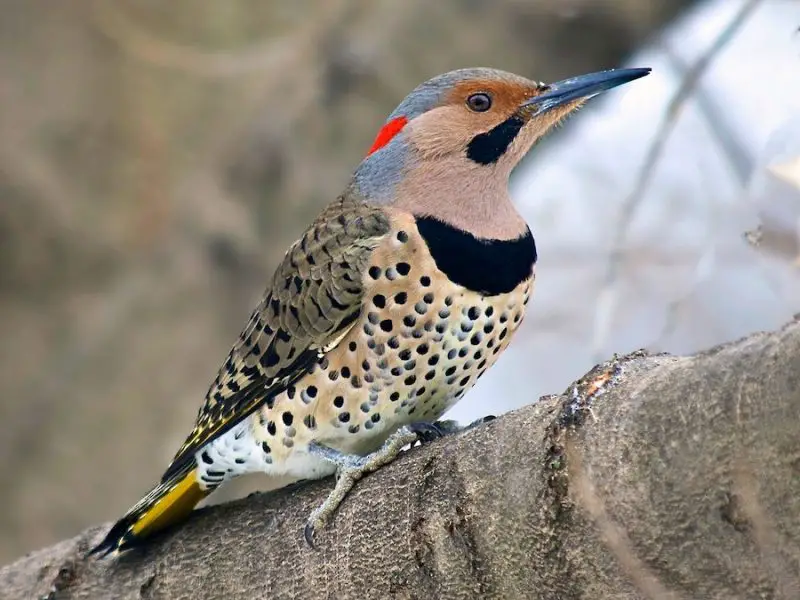
The Northern Flicker is a large woodpecker, measuring about 11 to 12 inches long with a wingspan of 16 to 20 inches. It has a brownish body with black spots on its chest and a striking barred pattern on its back. One of the most distinguishing features is the bright white rump patch visible in flight and the red or yellow shafted feathers depending on the regional variant. Males have a black “mustache” mark on their faces.
Unlike most woodpeckers that forage on trees, Northern Flickers often feed on the ground, probing for ants and beetles with their long, curved bills. They also eat fruits, berries, and seeds. Their foraging behavior is unique as they pick insects off the soil rather than just on trees. They drum loudly on metal surfaces and tree trunks during the breeding season to communicate.
In Illinois, Northern Flickers are found in woodlands, forest edges, parks, and suburban areas. They nest in tree cavities and can also be seen perching on fence posts or utility poles. These birds are migratory in the northern parts of their range but often remain year-round in Illinois, especially in southern areas.
A fun fact about Northern Flickers is that they are one of the few woodpecker species that use their long tongue not only to capture insects but also to clean out nesting cavities. Their tongue can extend up to 4 inches beyond the tip of their bill!
Pileated Woodpecker
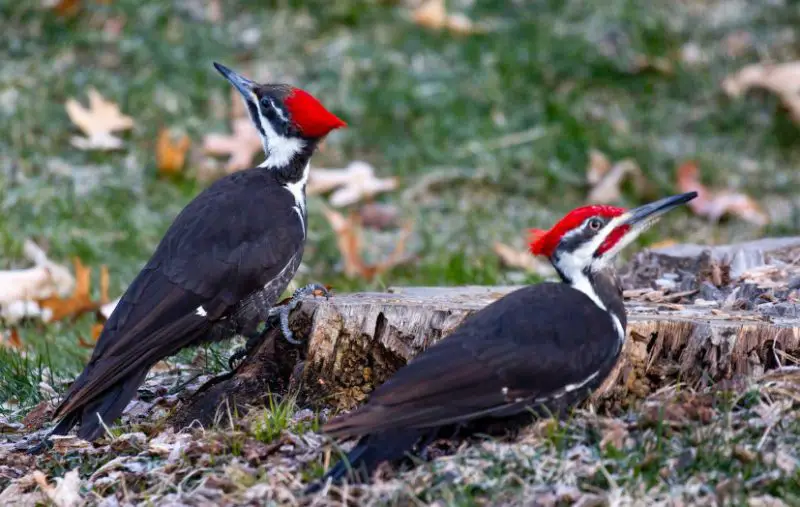
The Pileated Woodpecker is the largest woodpecker species commonly found in Illinois, reaching lengths of 16 to 19 inches and a wingspan of up to 29 inches. It is unmistakable with its bold black body, white stripes down the neck, and bright red crest atop its head. The bill is large and chisel-like, perfect for excavating deep into trees.
Pileated Woodpeckers are known for their powerful drumming and loud, distinctive calls that echo through forests. They primarily feed on carpenter ants and wood-boring beetle larvae, excavating large rectangular holes in dead or decaying trees to reach their prey. Their strong foraging behavior creates noticeable damage to trees, which can also provide nesting sites for other animals.
These birds inhabit mature forests and wooded parks throughout Illinois, preferring large tracts of forest with plenty of dead wood. They are mostly non-migratory and stay in their territories year-round. Due to their size and striking appearance, they are a favorite among birdwatchers.
A fun fact about the Pileated Woodpecker is that its excavations are so large they can often be mistaken for those made by the extinct ivory-billed woodpecker. Their powerful beak and neck muscles enable them to hammer wood with incredible force without injury.
Yellow-bellied Sapsucker
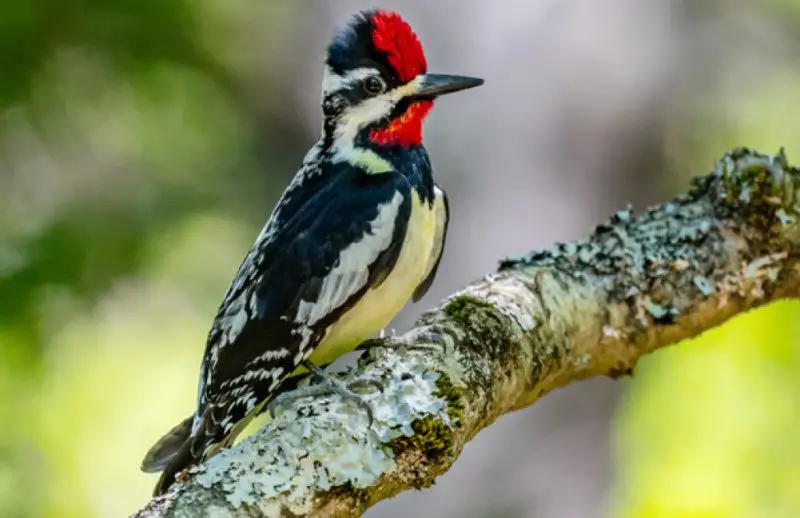
The Yellow-bellied Sapsucker is a medium-sized woodpecker, about 7.5 to 9 inches long with a wingspan of 14 to 17 inches. It has a distinctive black-and-white pattern on its face and neck, with a red forehead and throat patch — males have a red throat while females’ throats are white. Its name comes from the pale yellow wash on its belly, which can be subtle.
This species is known for drilling neat rows of small holes in tree bark to drink the sap and catch insects attracted to it. These sap wells are a unique feeding strategy among woodpeckers. Besides sap, Yellow-bellied Sapsuckers eat insects and occasionally fruits, especially in winter when insects are scarce.
In Illinois, they are migratory visitors during the spring and fall and are mainly found in deciduous forests, mixed woodlands, and orchards. They prefer trees like maples, birches, and birches for sap drilling. Their distinctive sap wells are sometimes noticeable in local forests.
A fun fact is that many other animals, including hummingbirds and squirrels, rely on the sap wells created by Yellow-bellied Sapsuckers as a vital food source, making them important ecosystem engineers.
Red-headed Woodpecker
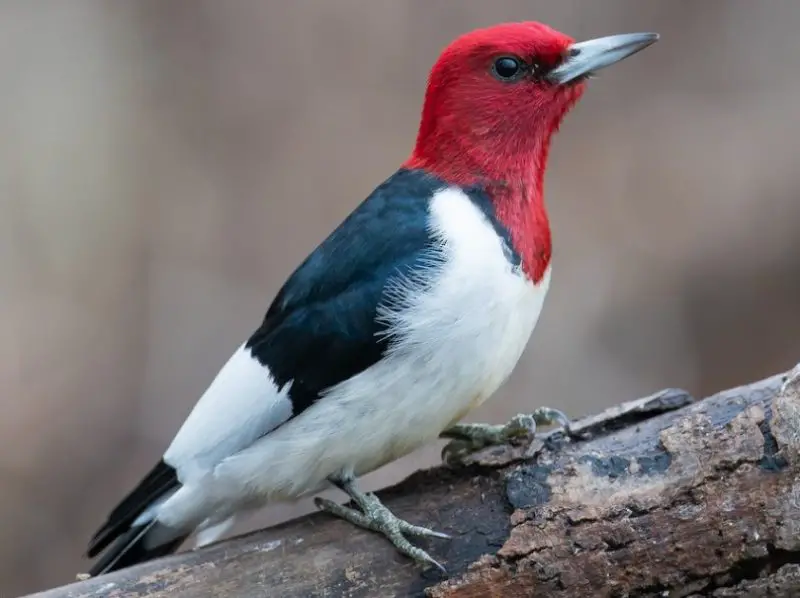
The Red-headed Woodpecker is a striking medium-sized bird, roughly 7.5 to 9 inches long with a wingspan around 16 to 18 inches. Its most remarkable feature is the entirely bright red head and neck, contrasting sharply with its white underparts and glossy black back and wings. This bold coloration makes it easy to identify.
They are known for their acrobatic behavior, often catching insects in mid-air and caching food like nuts and seeds for later use. Their diet includes insects, fruits, seeds, and occasionally small rodents. Red-headed Woodpeckers nest in tree cavities, often using dead trees or snags.
In Illinois, these woodpeckers inhabit open woodlands, forest edges, and savannas. They prefer habitats with scattered large trees and abundant dead wood for nesting. Their population has declined in some areas due to habitat loss but they remain a treasured sight for bird enthusiasts.
A fun fact about the Red-headed Woodpecker is its habit of storing food in various hiding spots, similar to squirrels, demonstrating impressive memory and planning skills.
Black-backed Woodpecker
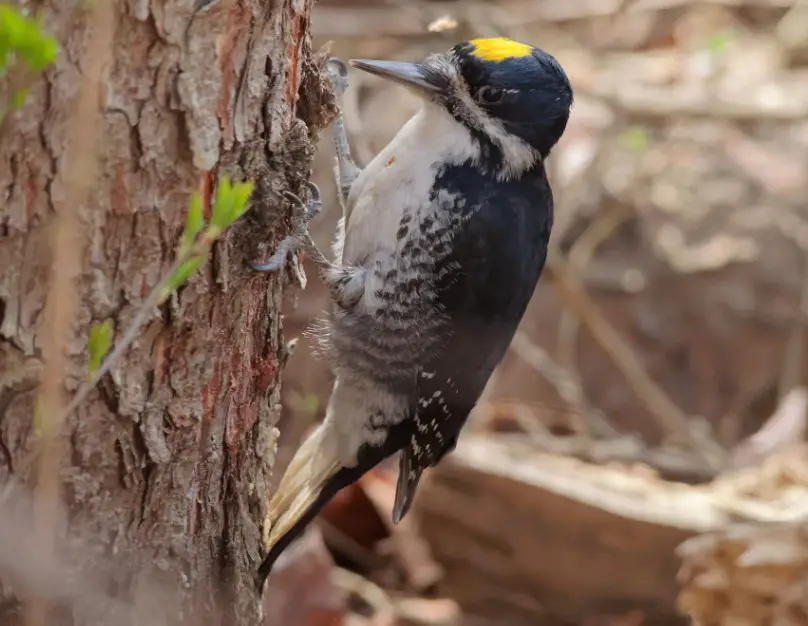
The Black-backed Woodpecker is a rare visitor to Illinois, more commonly found in boreal forests to the north. It is about 9 to 10 inches long with a wingspan of 15 to 17 inches. This woodpecker has an all-black back and wings with a yellow crown patch on males, while females lack the yellow marking.
Its behavior is closely tied to burned forests, where it specializes in feeding on beetle larvae that infest dead and dying trees after forest fires. Its powerful bill helps it excavate deep into charred wood. The Black-backed Woodpecker’s diet is almost entirely insectivorous.
Though uncommon in Illinois, Black-backed Woodpeckers can occasionally be seen during irruptive movements when they move south from their usual northern range. They prefer mature coniferous forests and burned areas, which are less common in Illinois.
A fun fact is that this woodpecker is sometimes called a “fire bird” because it often colonizes areas recently affected by wildfires, playing a key role in forest recovery.
American Three-toed Woodpecker

The American Three-toed Woodpecker is another rare visitor in Illinois, mostly found in northern coniferous forests. It measures about 8 to 10 inches long with a wingspan of roughly 15 to 17 inches. It resembles the Black-backed Woodpecker but lacks the yellow crown patch and has only three toes instead of the usual four.
This woodpecker feeds primarily on wood-boring beetle larvae found in dead trees, especially in burned or beetle-infested forests. It uses its strong bill to dig deep into tree bark. Its diet is almost entirely insectivorous, and it rarely feeds on sap or fruits.
In Illinois, sightings are very rare and typically occur during migrations or irruptions when northern birds move south. It prefers dense coniferous forests and post-fire habitats, which are uncommon in Illinois’ mostly deciduous woodlands.
A fun fact is that the three-toed woodpecker’s toe arrangement gives it better grip on tree trunks in snowy, northern environments where it usually lives.
Lewis’s Woodpecker
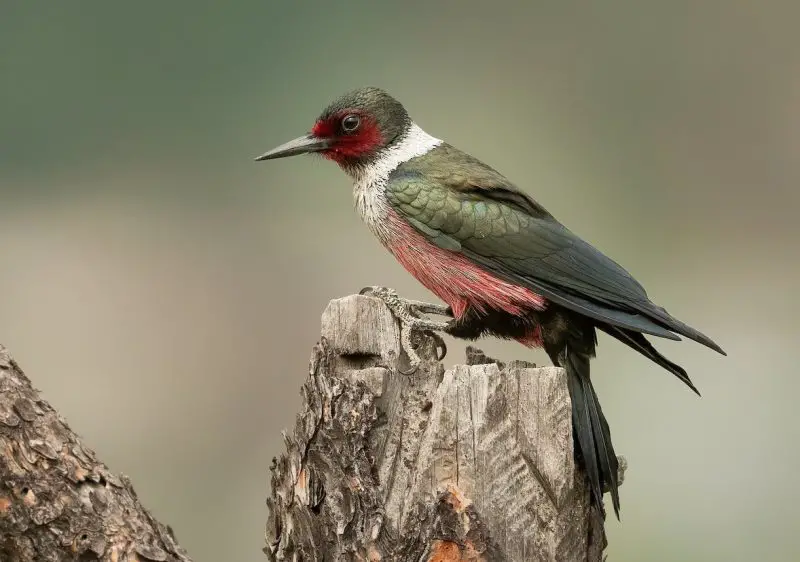
Lewis’s Woodpecker is a strikingly different woodpecker, larger than many others at about 10 to 12 inches in length with a wingspan of 18 to 20 inches. Unlike typical woodpeckers, it has a dark greenish-black back, pinkish belly, and a red face. Its flight is more like a crow’s, with slow, graceful wing beats.
It feeds primarily by catching insects in the air, a behavior called “hawking,” unlike most woodpeckers that forage on tree trunks. It also eats nuts and berries, storing some food for later use. This bird nests in tree cavities, often in open pine forests.
Lewis’s Woodpecker is very rare in Illinois, mostly found in western North America, but occasional vagrants are reported. Its preferred habitat is open woodlands and burned forests, often at higher elevations.
A fun fact is that Lewis’s Woodpecker was named after the explorer Meriwether Lewis, who first described the species during the Lewis and Clark expedition.
Williamson’s Sapsucker
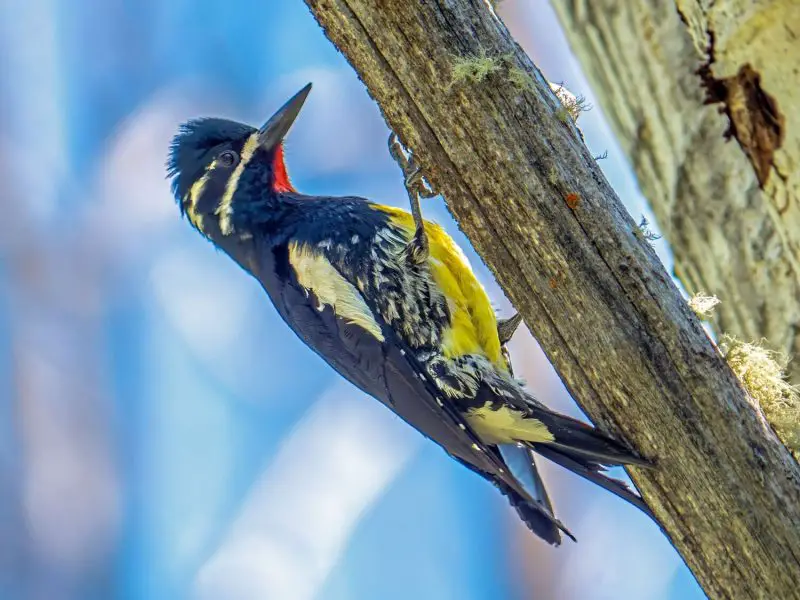
Williamson’s Sapsucker is one of the rarest woodpeckers in Illinois, mostly found in western mountainous regions but very occasionally spotted as a vagrant in the state. It measures about 8.5 to 10 inches in length with a wingspan of approximately 16 to 18 inches. Males have striking black and white plumage with a bold yellow belly patch, while females are more brownish.
Like other sapsuckers, it drills sap wells but also feeds on insects and tree cambium. Its foraging behavior includes both sap feeding and wood-boring insect hunting. Williamson’s Sapsucker prefers coniferous forests and higher elevations.
Because it is extremely rare in Illinois, any sightings are noteworthy for birdwatchers. It mainly inhabits mountainous regions in the west but sometimes wanders far east during irruptive years.
A fun fact is that Williamson’s Sapsucker’s feeding holes are often used by other animals, making it an important species for ecosystem engineering in its native habitat.
FAQs About Woodpeckers in Illinois
What types of woodpeckers are commonly found in Illinois?
Illinois is home to several woodpecker species including Downy Woodpecker, Hairy Woodpecker, Red-bellied Woodpecker, Northern Flicker, and Pileated Woodpecker. Some rare visitors include Black-backed Woodpecker and Lewis’s Woodpecker.
How can I tell the difference between a Downy and Hairy Woodpecker?
The Downy Woodpecker is smaller with a shorter bill, while the Hairy Woodpecker is larger with a longer, more robust bill. Both have similar black and white patterns, but size and bill length are the main differences.
What do woodpeckers eat in Illinois?
Woodpeckers mainly feed on insects such as beetle larvae, ants, and spiders found under tree bark. They also eat fruits, nuts, seeds, and sap depending on the species and season.
Where do woodpeckers typically live and nest in Illinois?
Woodpeckers prefer wooded habitats including deciduous forests, parks, and suburban areas with mature trees. They nest in tree cavities, often excavating their own holes in dead or decaying trees.
Why do woodpeckers peck on trees?
Woodpeckers peck trees to find food, create nesting cavities, and communicate by drumming sounds to attract mates or establish territory.
Are woodpeckers beneficial or harmful to trees?
Woodpeckers can help control insect populations that damage trees, but excessive pecking on living trees can sometimes cause harm. Generally, they play an important ecological role in healthy forest environments.
When is the best time to spot woodpeckers in Illinois?
Woodpeckers can be seen year-round in Illinois, but they are most active during the breeding season in spring and early summer when drumming and feeding behaviors increase.
Can I attract woodpeckers to my backyard?
Yes, you can attract woodpeckers by providing suet feeders, nuts, and sunflower seeds. Planting native trees and leaving dead trees or snags can also provide natural feeding and nesting sites.


